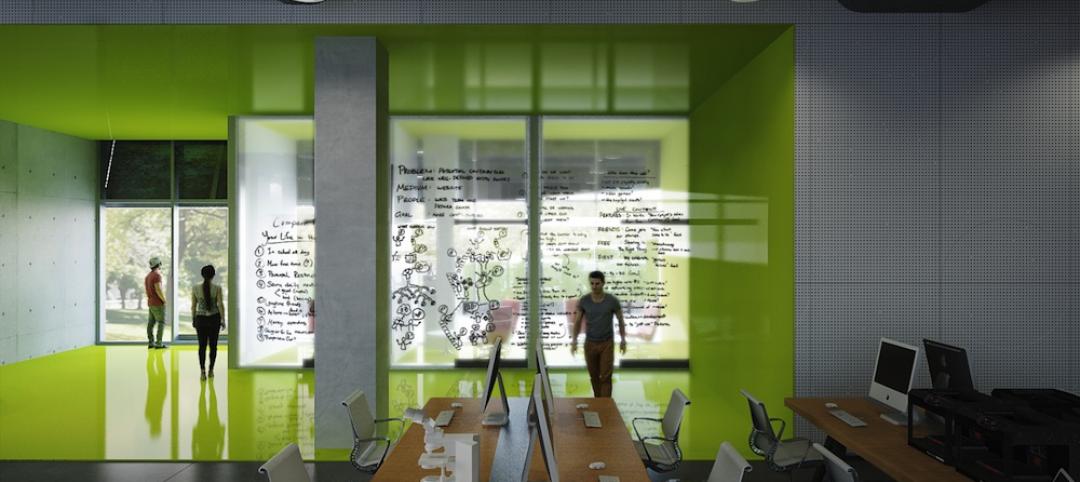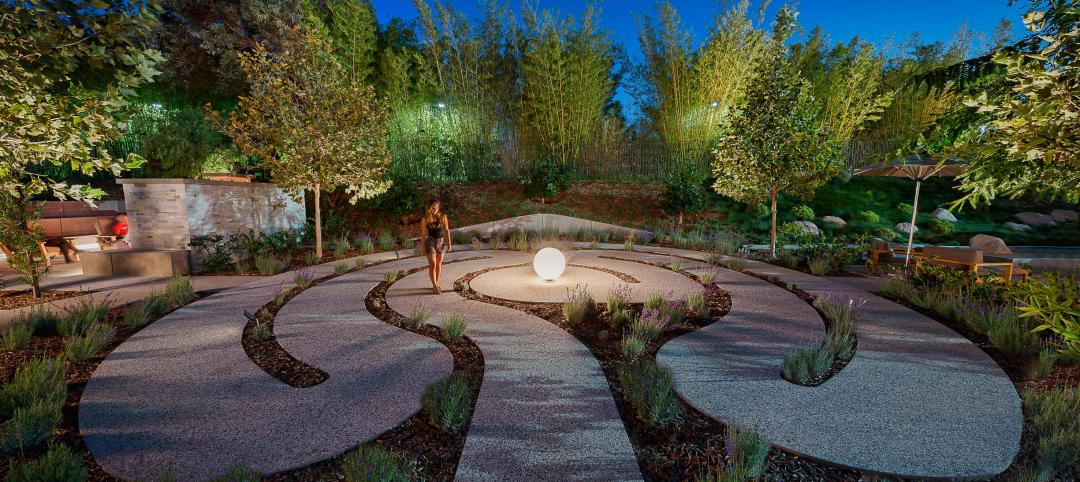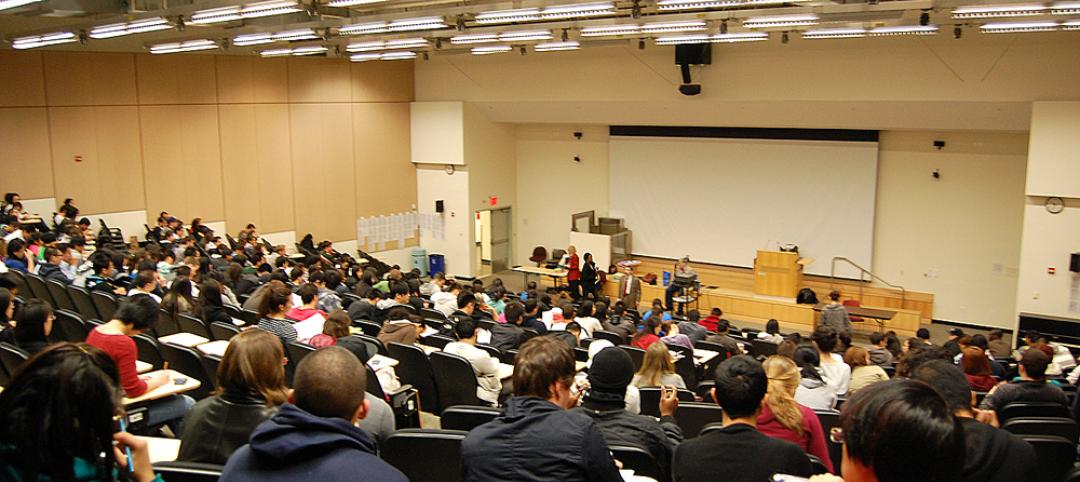The American Institute of Architects (AIA) Committee on Architecture for Education (CAE) has selected nine educational facilities for this year’s CAE Education Facility Design Awards.
The program honors educational facilities that the jury believes should serve as an example of a superb place in which to learn, furthering the client's mission, goals and educational program while demonstrating excellence in architectural design.
The jury for the 2015 Educational Facility Design Awards includes: J. Stuart Pettitt, AIA (Chair); Straub Pettitt Yaste Architects; William C. Ayers, education advocate; Victoria S. Bergsagel, Architects of Achievement; Mark Kranz, AIA, SmithGroup JJR; and Robert Miklos, FAIA, designLAB architects.
More information about the recipients here.
Berklee Tower; Berklee College of Music; Boston
Award of Excellence
William Rawn Associates, Architects, Inc.

All images courtesy of AIA
This 16-story mixed-use building is on the Berklee College of Music campus. A 40-foot-high performance and dining space shows student performances nightly and fronts onto a major Boston thoroughfare. Twelve floors, housing 380 students plus a fitness center and music practice rooms, sit above the performance space. Six double-height lounges on the residential floors link two floors of students. Two floors below grade house the largest recording studio complex in New England.
Health Sciences Education Building (HSEB); University of Arizona & Northern Arizona University; Phoenix
Award of Excellence
CO Architects with Ayers Saint Gross

The striated copper cladding helps protect against a harsh desert climate. The design meets the two universities’ desire for identity, sustainability and effective new learning environments. Many student-focused spaces encourage interaction between students and lecturers. The instructional elements of the project are organized in east-west blocks to minimize the building’s exposure to the intense Arizona sun. These blocks are located close together, creating a narrow “canyon”: a shaded space for outdoor gatherings and providing access to lecture halls.
University Center, The New School; New York City
Award of Excellence
Skidmore, Owings & Merrill LLP with SLCE Architects

With its 230,000-sf, seven-story campus center and 130,000-sf residential tower, the University Center reorganizes the elements of a traditional campus, from quads to classrooms and living quarters. Vertical, horizontal, and diagonal campus pathways ease movement through the building while increasing interaction among students and faculty. Academic spaces can be renovated or reconfigured with minimal impact on power, data, or lighting to meet changing needs.
Vashon Island High School; Vashon Island, Washington
Award of Excellence
Integrus Architecture

Located on a small island in Puget Sound, the design team sought to impart a quality of porosity to the new building. The concept of porosity defines how the building supports spatial connections and how students move in and out of the building. Shared areas are located adjacent to more formal teaching spaces, while a learning commons extends the library. A small group presentation room is located within the commons and a central courtyard provides sheltered outdoor learning areas.
Carl Sandburg Elementary School; Kirkland, Washington
Award of Merit
NAC|Architecture

Preserving the park-like feel of the northwest corner of Carl Sandburg Elementary School was central to the planning of the replacement school. The majority of the classroom neighborhoods are focused on a grove of 70-year-old Big Leaf maples, creating multiple outdoor learning spaces. The school has a capacity of 600 students in neighborhoods of either three or four classrooms. Each neighborhood is organized around an open learning area, small group rooms, and teacher planning areas.
Clough Undergraduate Learning Commons, Georgia Institute of Technology; Atlanta
Award of Merit
Bohlin Cywinski Jackson

The Clough Commons is at the center of Georgia Tech’s campus. The three dimensional grid of circulation and daylight frames large sections of furnished common spaces for student study, interaction and experiential learning. The building anchors campus circulation and frames Tech Green, the school’s central outdoor space. Clough Commons's landscaped roof garden is one of Tech’s most popular destination amenities.
Reed College Performing Arts Building; Portland, Oregon
Award of Merit
Opsis Architecture LLP

Reed College’s Performing Arts Building creates a 78,000-sf, cross-disciplinary home for the arts, like theatre, dance, and music programs. The building functions as the public front door to the campus. All performance and teaching spaces open to the three-level, light-filled, arts atrium merging informal and formal learning.
e3 Civic High School; San Diego
Walter Taylor Award
LPA, Inc.

The central circulation provides students with more than just a path of travel as the central steps and gallery space connecting the two floors. Every gathering space has a pull out or quiet area and every learning cluster or village has a small team room and a larger social space, all to support learning skills like critical thinking, collaboration, and communication.
Nueva School at Bay Meadows; San Mateo, California
Shirley Cooper Award
Leddy Maytum Stacy Architects

The Nueva School's new campus provides innovative educational spaces that supports cross disciplinary engagement and project-based inquiry. It fosters a strong community, models healthy, low-carbon living and learning, and adaptively reuses space at a former horse racing venue.
Related Stories
University Buildings | Feb 29, 2016
4 factors driving the student housing market
In the hyper-competitive higher education sector, colleges and universities view residence halls as extensions of their academic brands, both on and off campus.
University Buildings | Feb 17, 2016
New ideas to help universities attract and empower STEM students
Educational institutions are focusing on new learning strategies that engage students in activities, enable collaboration across STEM disciplines, and encourage students to use their hands just as much as their heads, as Stephen Blair of CannonDesign writes.
Multifamily Housing | Feb 1, 2016
Top 10 kitchen design trends for 2016
Charging stations, built-in coffeemakers, and pet stations—these are among the top kitchen design trends for the coming year, according to a new survey of kitchen and bath designers by the National Kitchen & Bath Association.
| Jan 14, 2016
How to succeed with EIFS: exterior insulation and finish systems
This AIA CES Discovery course discusses the six elements of an EIFS wall assembly; common EIFS failures and how to prevent them; and EIFS and sustainability.
Greenbuild Report | Dec 10, 2015
AASHE’s STARS tool highlights the university sector’s holistic approach to sustainability
Buzzwords like “living lab” and “experiential learning” are indicative of the trend toward more holistic sustainability programs that incorporate all facets of college life.
University Buildings | Nov 5, 2015
How active design is reshaping higher education campuses
Active design, a dynamic approach to design with a primary focus on people, assists students in learning to make healthy choices, writes LPA's Glenn Carels.
University Buildings | Nov 4, 2015
Yale completes Singapore campus
The Yale-NUS College has three residence halls and two administrative and academic buildings, with courtyards in the middle of them all.
University Buildings | Oct 16, 2015
5 ways architecture defines the university brand
People gravitate to brands for many reasons. Campus architecture and landscape are fundamental influences on the college brand, writes Perkins+Will's David Damon.
University Buildings | Oct 16, 2015
Competency-based learning: A glimpse into the future of higher education?
For better or worse, the higher education experience for many young Millennials and Gen Zers will not resemble the four-year, life-altering experience that we enjoyed—it’s just too costly.
University Buildings | Sep 21, 2015
Vietnamese university to turn campus into ‘terraced forest’
Pockets of plantings will be dispersed throughout the staggered floors of the building, framing the expansive courtyard at its center.
















